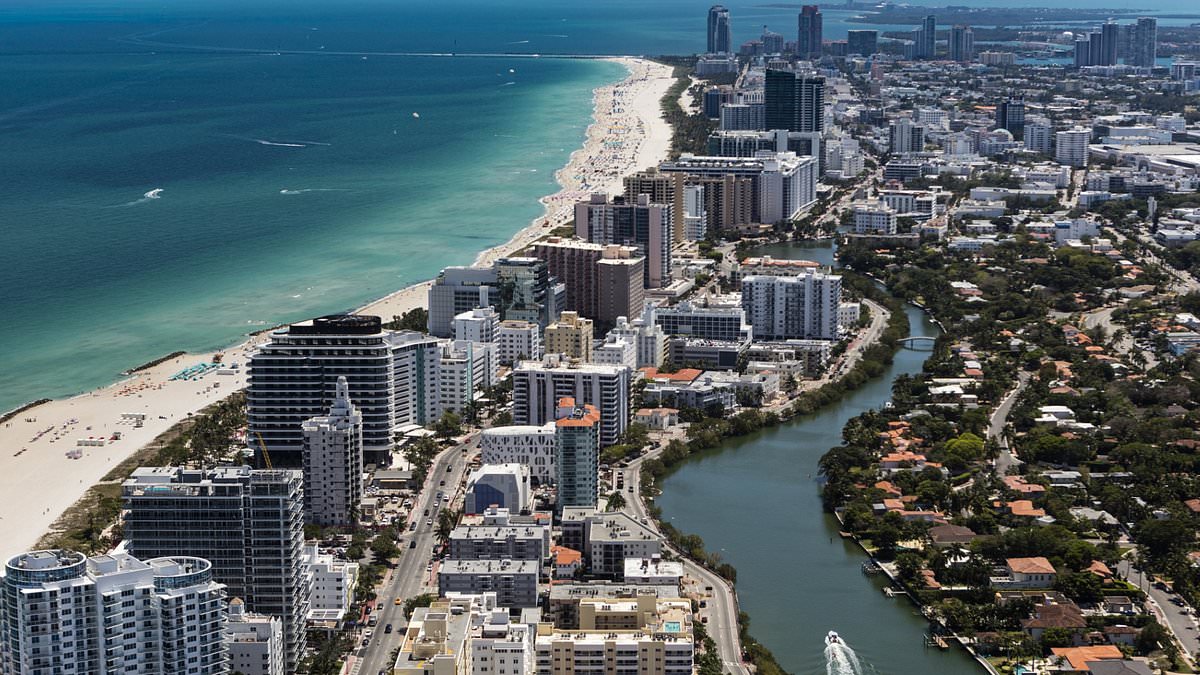An alarming number of luxury skyscrapers along Florida’s coastline have experienced sinking or settling in unexpected ways in recent years, a new study reveals – but there is a common factor in many of the cases.
Just over three dozen high-rise buildings, spanning a lengthy 12-mile stretch from Miami Beach to Sunny Isles Beach were discovered to have sunk or settled by 0.8 to 3.1 inches, according to scientists at the University of Miami Rosenstiel School of Marine, Atmospheric, and Earth Science.
The study, released on Friday, noted that about half of the buildings experiencing subsidence – the gradual sinking of an area of land – are less than a decade old, with most of the affected condos and hotels built after 2014.
Authors of the unnerving study, however, did offer some theories as to what may have caused the frightening sinking, based on their findings.
Though it’s not entirely uncommon to see minor sinking during and shortly after new construction, researchers include a link between construction-related tremors possibly attributing to the minor sinking.
High-rises expect to see ‘up to several tens of centimeters’ of settlement ‘during and immediately after construction,’ the University of Miami Rosenstiel School said in a statement.
The sinking has also been explained as ‘primarily due to the gradual reconfiguration of the sand grains into a denser packing within sandy layers interbedded in the limestone’ in the area, the study said.
Though, other theories hypothesize groundwater flow, daily tidal flow or storm-water injection may have played a hand in the ongoing phenomenon.
Researchers and local officials have since claimed there is no immediate cause for alarm as the sinking generally slows over time, in most cases.
‘We found that subsidence in most high-rises slows down over time, but in some cases, it continues at a steady rate. This suggests that subsidence could persist for an extended period,’ senior author Falk Amelung said.
However, researchers have called their newfound discovery ‘unexpected’.
‘The discovery of the extent of subsidence hotspots along the South Florida coastline was unexpected,’ lead author, Farzaneh Aziz Zanjani, said.
But, they plan to continue to monitor the affected areas as to gain a more complete understanding of the naturally occurring condition.
‘The study underscores the need for ongoing monitoring and a deeper understanding of the long-term implications for these structures,’ Aziz Zanjani said.
Concerns for Florida’s high-rises were drastically raised three years ago when a devastating tragedy rocked the picturesque skyline after a 12-story Miami condo building collapsed, killing 98 people.
The deadly collapse was allegedly flagged by scientists who had been studying the potentially dangerous condition, as their research revealed the sea-view condo development to be sinking at a rate of about 2 millimeters a year.
However, the findings, published by Florida International University in 2020, stated that the collapse was in part a result of the Champlain Tower South’s location on reclaimed wetlands and partially due to reinforced concrete that deteriorated from poor maintenance and flawed design.
Another study, released earlier this year, showed buildings in major cities along the Atlantic Coast were also sinking.
The research from Virginia Tech and the US Geological Survey showed that areas of New York City, Long Island, Baltimore and Virginia Beach were sinking more than the rate of seawater rise.
